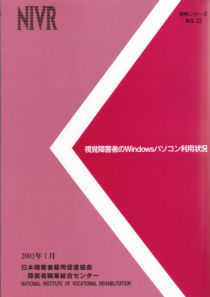
These days computers and screen readers are indispensable tools for the QOL of people who are blind. Therefore the number of blind people who can use them is expected to grow and their computer environment to be improved than ever. For the former purpose, information, such as what kind of tasks can be done with computers and screen readers and which hardware and software are needed to do them, is required for people who have never used computers. For the latter purpose, information, such as what kind of problems blind users have while learning and using computers, should be sent to developers, researchers, and teachers. Our Windows screen reader user survey was conducted to fulfill these purposes.
We asked user profiles, which hardware and software were used, and what kind of problems respondents had while learning and using Windows and its screen readers. Effective respondents were 81 visually impaired persons who were using Windows screen readers.
Nearly half of them were using more than one screen readers. As for hardware, half of them were using scanners and one sixth of them Braille printers and Braille displays at their workplaces. As for software, more than half of respondents were using word processors or editors, e-mail software, voiced Internet browsers, spreadsheets, CD-ROM dictionary viewers, and OCR software. Interestingly, three fourth of respondents were still using MS-DOS for many purposes.
There were many problems visually impaired people faced when they learned Windows. The commnest problem was that Windows was hard to comprehend. Secondly, speech output was terminated during the use. Thirdly, appropriate manuals, such as Braille documents, cassette tapes, and text files, were not available.
You can obtain free copies of "Windows PC User Survey" which contains the complete results of the survey. For these copies, please contact National Institute of Vocational Rehabilitation Tel: +81-43-297-9067
Last updated: January 23, 2006
Copyright (C) 2003-2006 Tetsuya WATANABE